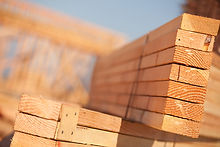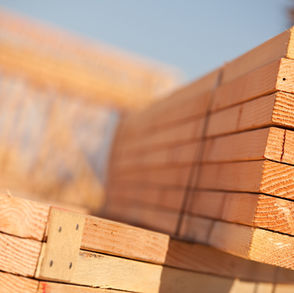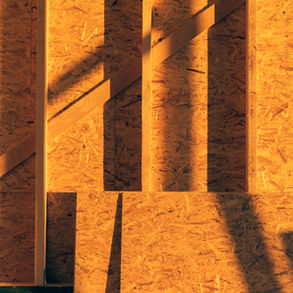
Timber Structures
Sustainability has a new name - timber structures are not just more sustainable, but also more beautiful.
Making whole structures using wood?
Wood is a versatile material with several properties that make it suitable for constructing timber structures. Here are some of the key properties:
1. Strength
Compressive Strength: Wood can withstand significant compressive forces, making it ideal for load-bearing applications.
Tensile Strength: Certain wood species exhibit high tensile strength, allowing them to resist stretching and pulling forces.
Bending Strength: Wood has excellent resistance to bending, which is crucial for beams and floor joists.
2. Durability
Natural Resistance: Some wood species, like cedar and redwood, have natural oils that resist decay and insect damage.
Treatment Options: Wood can be treated with preservatives to enhance its durability against environmental factors.
3. Weight
Lightweight: Wood is relatively lightweight compared to other construction materials, making it easier to handle and transport.
Structural Efficiency: Its strength-to-weight ratio allows for efficient design in timber structures.
4. Insulation Properties
Thermal Insulation: Wood has good thermal insulation properties, helping to maintain energy efficiency in buildings.
Sound Insulation: Wood can also provide sound insulation, contributing to a quieter indoor environment.
5. Aesthetic Appeal
Natural Beauty: Wood has a warm, natural appearance that enhances the aesthetic value of structures.
Versatile Finishes: It can be stained, painted, or left natural, providing design flexibility.
6. Sustainability
Renewable Resource: Wood is a renewable material, especially when sourced from sustainably managed forests.
Carbon Sequestration: Wood products store carbon, helping to mitigate climate change.
7. Workability
Ease of Manipulation: Wood can be easily cut, shaped, and joined using various tools and techniques.
Joinery Options: There are numerous joinery methods available for wood, allowing for strong and flexible connections.
8. Moisture Absorption
Hygroscopic Nature: Wood can absorb and release moisture, helping to regulate humidity levels in buildings.
Potential for Warping: While this property can be beneficial, it also requires careful consideration to prevent warping and cracking.
9. Structurally Tested Timber
Quality Assurance: Structurally tested timber undergoes rigorous testing to ensure it meets specific strength and durability standards, providing confidence in its performance.
Performance Ratings: This timber is often graded based on performance characteristics, allowing for informed selection based on structural requirements.
Design Compliance: Using structurally tested timber helps ensure compliance with building codes and regulations, enhancing safety in construction.
Predictable Behavior: Tested timber exhibits predictable behavior under load, which is essential for structural integrity and design accuracy.
These properties make wood an excellent choice for a wide range of timber structures, from residential homes to commercial buildings and bridges.
Suitable Wood Species
Image Inspiration









